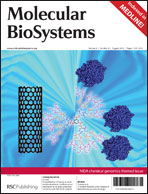A vast amount of data on the natural resistance of Saccharomyces cerevisiae to a diverse array of chemicals has been generated over the past decade (chemical genetics). We endeavored to use this data to better characterize the “systems” level properties of this phenomenon. By collating data from over 30 different genome-scale studies on growth of gene deletion mutants in presence of diverse chemicals, we assembled the largest currently available gene-chemical network. We also derived a second gene–gene network that links genes with significantly overlapping chemical-genetic profiles. We analyzed properties of these networks and investigated their significance by overlaying various sources of information, such as presence of TATA boxes in their promoters (which typically correlate with transcriptional noise), association with TFIID or SAGA, and propensity to function as phenotypic capacitors. We further combined these networks with ubiquitin and protein kinase-substrate networks to understand chemical tolerance in the context of major post-translational regulatory processes. Hubs in the gene-chemical network (multidrug resistance genes) are notably enriched for phenotypic capacitors (buffers against phenotypic variation), suggesting the generality of these players in buffering mechanistically unrelated deleterious forces impinging on the cell. More strikingly, analysis of the gene–gene network derived from the gene-chemical network uncovered another set of genes that appear to function in providing chemical tolerance in a cooperative manner. These appear to be enriched in lineage-specific and rapidly diverging members that also show a corresponding tendency for SAGA-dependent regulation, evolutionary divergence and noisy expression patterns. This set represents a previously underappreciated component of the chemical response that enables cells to explore alternative survival strategies. Thus, systems robustness and evolvability are simultaneously active as general forces in tolerating environmental variation. We also recover the actual genes involved in the above-discussed network properties and predict the biochemistry of their products. Certain key components of the ubiquitin system (e.g. Rcy1, Wss1 and Ubp16), peroxisome recycling (e.g. Irs4) and phosphorylation cascades (e.g. NPR1, MCK1 and HOG) are major participants and regulators of chemical resistance. We also show that a major sub-network boosting mitochondrial protein synthesis is important for exploration of alternative survival strategies under chemical stress. Further, we find evidence that cellular exploration of survival strategies under chemical stress and secondary metabolism draw from a common pool of biochemical players (e.g. acetyltransferases and a novel NTN hydrolase).

This article is Open Access
 Please wait while we load your content...
Something went wrong. Try again?
Please wait while we load your content...
Something went wrong. Try again?


 Please wait while we load your content...
Please wait while we load your content...